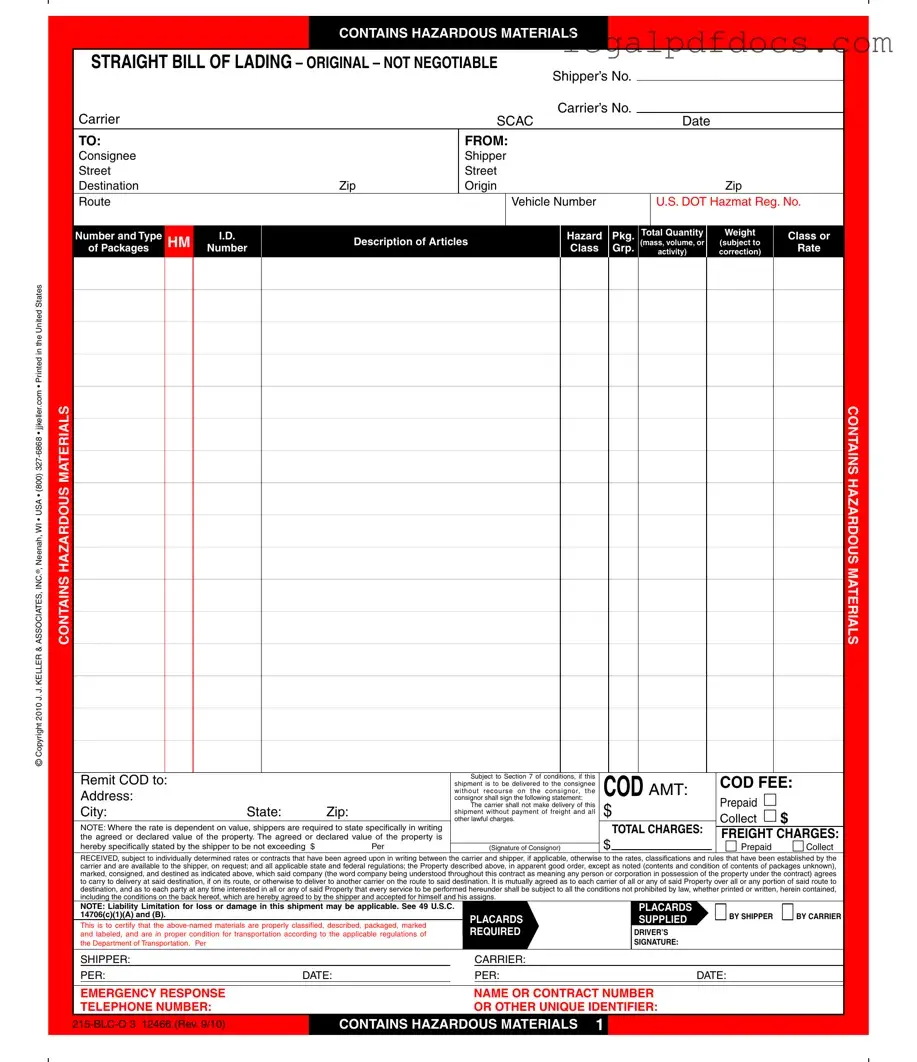The Hazard Bill of Lading form is a critical document used in the transportation of hazardous materials. It serves as a contract between the shipper and the carrier, detailing essential information such as the shipper and consignee's addresses, the nature of the hazardous materials being transported, and specific handling instructions. Key elements include the description of the articles, total quantity, weight, and applicable hazard classifications. This form outlines payment responsibilities, including freight charges and any additional costs associated with the shipment. It also emphasizes the importance of proper packaging and labeling, ensuring compliance with federal regulations. The form contains stipulations regarding liability limitations for loss or damage, along with procedures for filing claims. In cases where hazardous materials are involved, the form requires the shipper to certify that the materials are correctly classified and packaged. Understanding the nuances of this form is vital for anyone involved in the shipping of hazardous goods, as it impacts both legal and safety considerations during transport.
